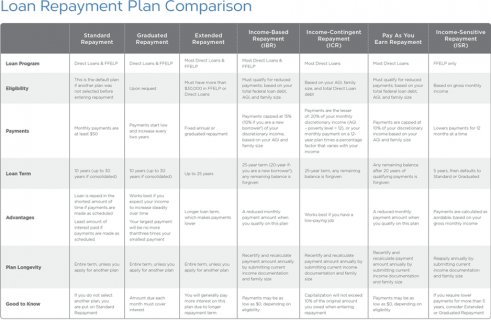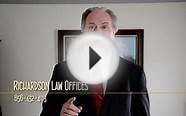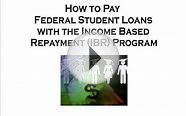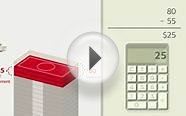
Under all four plans, any remaining loan balance is forgiven if your federal student loans aren't fully repaid at the end of the repayment period. For any income-driven repayment plan, periods of economic hardship deferment and periods of repayment under certain other repayment plans will count toward your total repayment period. Whether you will have a balance left to be forgiven at the end of your repayment period depends on a number of factors, such as how quickly your income rises and how large your income is relative to your debt. Because of these factors, you may fully repay your loan before the end of your repayment period.
If you’re making payments under an income-driven repayment plan and also working toward loan forgiveness under the Public Service Loan Forgiveness (PSLF) Program, you may qualify for forgiveness of any remaining loan balance after you've made 10 years of qualifying payments, instead of 20 or 25 years. Qualifying payments for the PSLF Program include payments made under any of the income-driven repayment plans.
REPAYE Plan
Any borrower with can make payments under this plan.
PAYE and IBR Plans
Each of these plans has an eligibility requirement you must meet to qualify for the plan. To qualify, the payment you would be required to make under the PAYE or IBR plan (based on your income and family size) must be less than what you would pay under the Standard Repayment Plan with a 10-year repayment period.
- If the amount you would have to pay under the PAYE or IBR plan (based on your income and family size) is more than what you would have to pay under the 10-year Standard Repayment Plan, you wouldn't benefit from having your monthly payment amount based on your income, so you don't qualify.
- Generally, you'll meet this requirement if your federal student loan debt is higher than your annual discretionary income or represents a significant portion of your annual income.
In addition to meeting the requirement described above, to qualify for the PAYE Plan you must also be a new borrower as of Oct. 1, 2007, and must have received a disbursement of a Direct Loan on or after Oct. 1, 2011. You're a new borrower if you had no outstanding balance on a Direct Loan or FFEL Program loan when you received a Direct Loan or FFEL Program loan on or after Oct. 1, 2007.
ICR Plan
This plan is the only available income-driven repayment option for parent PLUS loan borrowers. Although PLUS loans made to parents can’t be repaid under any of the income-driven repayment plans (including the ICR Plan), parent borrowers may consolidate their Direct PLUS Loans or Federal PLUS Loans into a Direct Consolidation Loan and then repay the new consolidation loan under the ICR Plan (though not under any other income-driven plan).
Will I always pay the same amount each month under an income-driven repayment plan?
No. Under all of the income-driven repayment plans, your required monthly payment amount may increase or decrease if your income or family size changes from year to year. Each year you must “recertify” your income and family size. This means that you must provide your loan servicer with updated income and family size information so that your servicer can recalculate your payment. You must do this even if there has been no change in your income or family size.
Your loan servicer will send you a reminder notice when it’s time for you to recertify. To recertify, you must submit another income-driven repayment plan application. On the application, you’ll be asked to select the reason you’re submitting the application. Respond that you are submitting documentation of your income for the annual recalculation of your payment amount.
Although you’re required to recertify your income and family size only once each year, if your income or family size changes significantly before your annual certification date (for example, due to loss of employment), you can submit updated information and ask your servicer to recalculate your payment amount at any time. To do this, submit a new application for an income-driven repayment plan. When asked to select the reason for submitting the application, respond that you are submitting documentation early because you want your servicer to recalculate your payment immediately.
Interesting facts
Additional information



|
YOUR FIRST DOLLAR ONLINE in 7 days or less (Absolute Beginners Only Training): How to make your first dollar online by publishing simple e-books on kindle eBooks |













